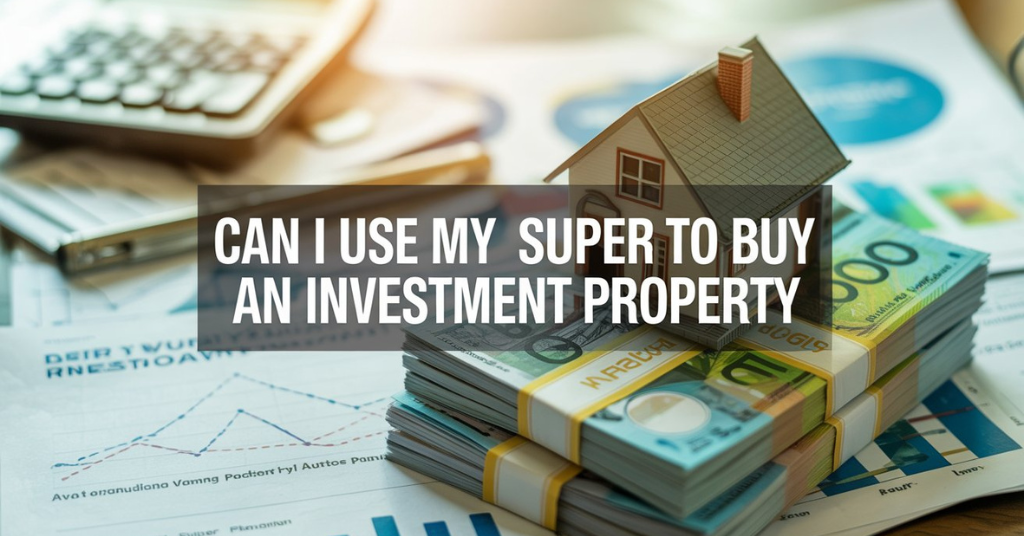Many Australians dream of owning an investment property. But building a property portfolio can be difficult, especially when saving a large deposit. That’s when a common question comes up:
“Can I use my super to buy an investment property?”
The short answer is: Yes, you can — but only in a specific way, through something called a Self-Managed Super Fund (SMSF). You cannot directly withdraw your super and go house shopping. Instead, your super fund itself becomes the investor.
In this easy-to-understand guide, we will explain:
- What using super for property really means
- What is an SMSF
- Rules you must follow
- Step-by-step process
- Real-life examples and numbers
- Pros and cons
- Alternatives like FHSS Scheme
- Final opinion — Is it worth it?
Let’s get started!
What Does “Using Super to Buy Property” Actually Mean?
You cannot just take money out of your super and buy a house — unless you are retired or meet special conditions.
However, you can set up a Self-Managed Super Fund (SMSF) and let your super fund itself purchase a property in its own name. This means the property belongs to the SMSF — not directly to you.
You, as a trustee of your SMSF, manage it — but you cannot live in the property or rent it to family members. It must be purely for investment, like renting it to someone else at market rates.
How Can You Legally Buy Property with Super?
To use your super to buy an investment property, you must follow three main rules:
| Requirement | Explanation |
| You must have an SMSF (Self-Managed Super Fund) | You can’t use a normal industry or retail super fund. You need your own SMSF. |
| The property must be for investment only | You cannot live in it or rent it to friends or relatives. |
| Everything must follow the Sole Purpose Test | The only purpose must be to provide retirement benefits — not current personal benefit. |
Step-by-Step: How to Use Your Super to Buy an Investment Property
Here’s a simple breakdown of the full process:
| Step | What You Need to Do |
| 1. Set Up an SMSF | Get legal documents, trustees, and a special bank account. |
| 2. Transfer Your Existing Super Into the SMSF | Move your balance from your old super fund. |
| 3. Make an Investment Strategy | Explain why buying property is good for your retirement plan. |
| 4. Choose a Property | Must be bought at market price from a non-related seller. |
| 5. Buy With Cash or Loan (LRBA) | If you have enough super, buy outright. If not, use a special SMSF loan. |
| 6. Rent It Out | Rent should go directly into your SMSF account. |
| 7. Pay All Bills from SMSF | Rates, repairs, interest — everything must be paid by the SMSF. |
Can You Borrow Money Through Super to Buy Property?
Yes, you can borrow using a special loan called an LRBA — Limited Recourse Borrowing Arrangement. But it comes with strict rules:
✅ The loan is only secured against that one property
✅ If the loan defaults, the bank can only take the property, not your other super assets
✅ Interest rates are higher compared to normal loans
Example 1: Buying Property Using Only Super (No Loan)
Let’s say your SMSF has $400,000.
- You decide to buy a $300,000 investment property
- You keep $100,000 as a safety buffer for expenses
Now let’s calculate returns:
| Item | Amount |
| Purchase Price | $300,000 |
| Rental Income (4% per year) | $12,000 |
| Annual Expenses (Rates, Repairs, Insurance – 1%) | $3,000 |
| Net Rental Profit | $9,000 |
| Tax at 15% | $1,350 |
| Final Income to Super | $7,650 per year |
If property grows 5% in value annually, after 1 year it becomes $315,000.
Capital gain = $15,000 → CGT applies at 10% → Tax = $1,500 → Profit = $13,500.
✅ So total return = $7,650 + $13,500 = $21,150 in one year.
Example 2: Buying Property with Loan (Borrowing)
Let’s say your SMSF has $200,000.
You buy a $400,000 property by:
- Using $100,000 as deposit
- Borrowing $300,000 via LRBA
| Item | Amount |
| Rental Income (4.5% per year) | $18,000 |
| Annual Expenses | $4,000 |
| Loan Interest (6% on $300k) | $18,000 |
| Total Costs | $22,000 |
| Income After Costs | -$4,000 (loss) |
This means your SMSF must use cash reserves to cover the loss each year.
However, if property value rises 5%, gain = $20,000, and after tax you still make profit.
✅ Borrowing increases growth potential but increases risk too.
Pros and Cons of Using Super to Buy Investment Property
| Pros | Cons |
| Lower tax on rent (15%) and capital gains (10%) | Very strict legal rules |
| You control where your money is invested | Setup and annual SMSF costs |
| You can borrow to build wealth | Higher loan interest rates |
| Rental income grows your super | You cannot live in the property |
| Good long-term retirement strategy | Poor liquidity if you need cash quickly |
Who Should Consider This Strategy?
This strategy may suit you if:
✅ You have at least $200,000+ in super (alone or combined with partner)
✅ You are comfortable managing property and legal responsibilities
✅ You plan to hold long-term (7+ years)
✅ You are happy with long-term growth — not quick cash
Who Should Avoid It?
❌ If your super balance is below $150,000, fees will eat your returns
❌ If you need frequent access to money, property is not liquid
❌ If you don’t like paperwork or legal responsibilities
Alternative: FHSS Scheme (For First Home Buyers)
If your goal is to buy your own home (not an investment property) — you can use the First Home Super Saver Scheme (FHSS).
| Question | Answer |
| What is FHSS? | Lets you voluntarily contribute money into super and withdraw it to buy your first home. |
| How much can you contribute? | Up to $15,000 per year and $50,000 total. |
| Can you use it for investment property? | ❌ No — only for your own first home. |
Final Opinion — Is It a Good Idea?
Yes — but only for the right person.
Using your super to buy an investment property through an SMSF is not a get-rich-quick scheme. It’s a serious, long-term retirement strategy.
You get great tax benefits, capital growth, and full control — but you also get added responsibility, risks, and legal obligations.
Also Read: Growing Wealth Property Investment Guide
Conclusion: Can I Use My Super to Buy an Investment Property?
Using your super to buy an investment property is possible, but it must be done correctly through an SMSF. You need the right balance, clear strategy, and strong financial discipline.If you’re seriously considering it, always speak to a licensed financial advisor or SMSF specialist first. Every person’s situation is different — what works for one may not work for another.



